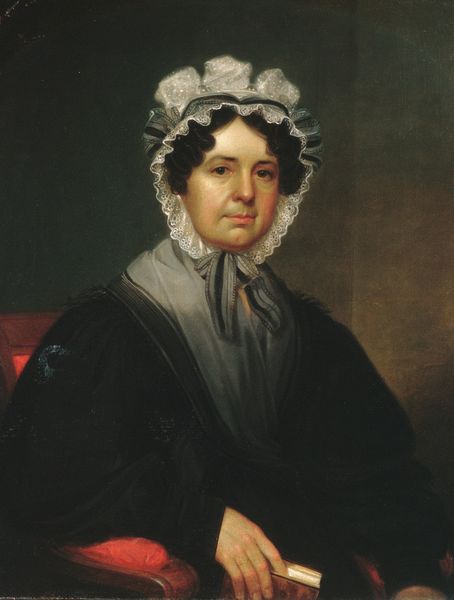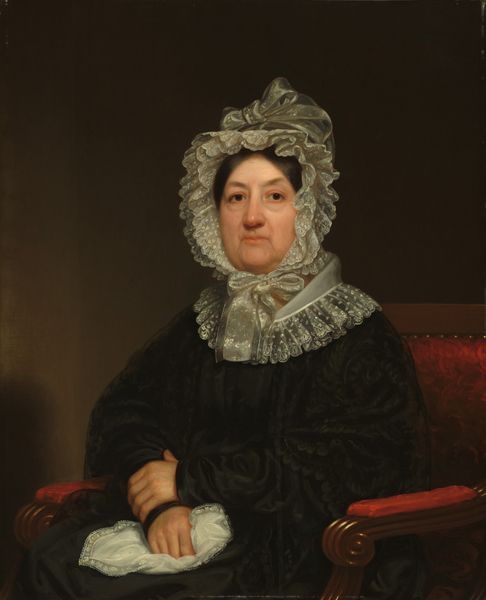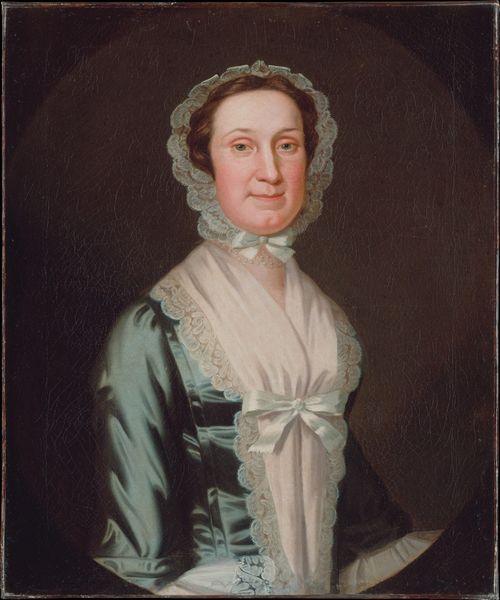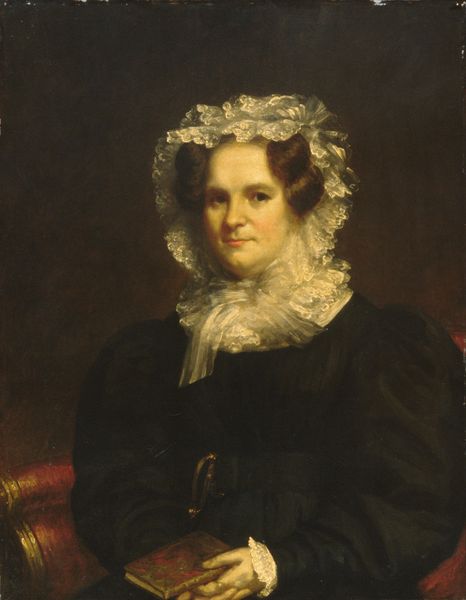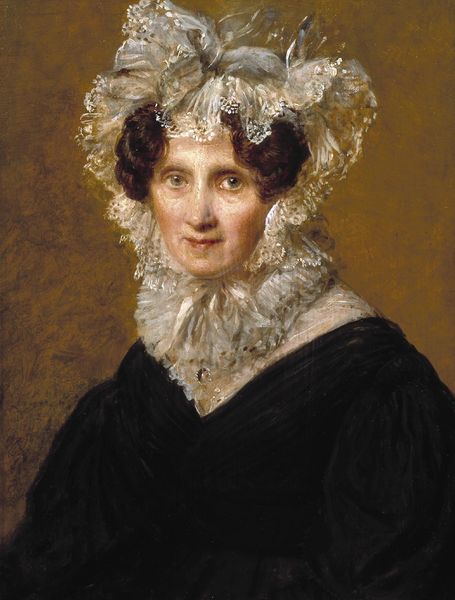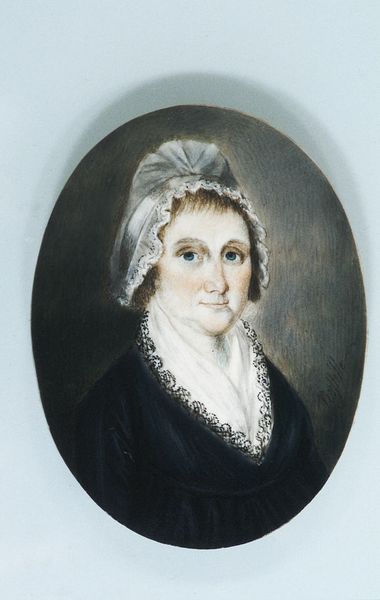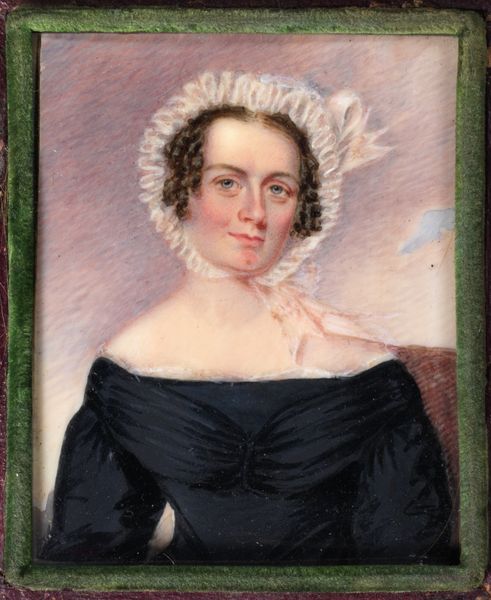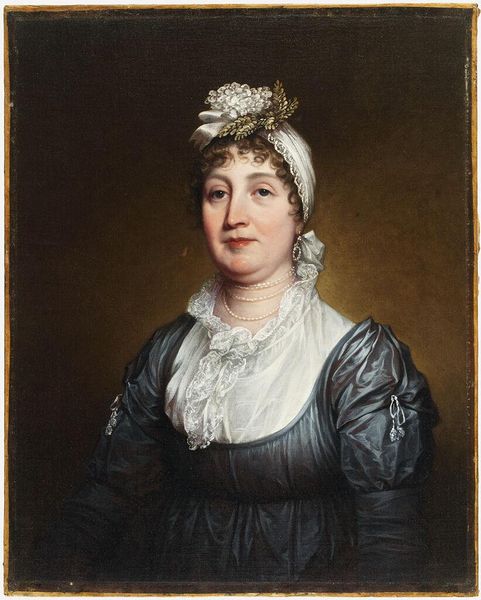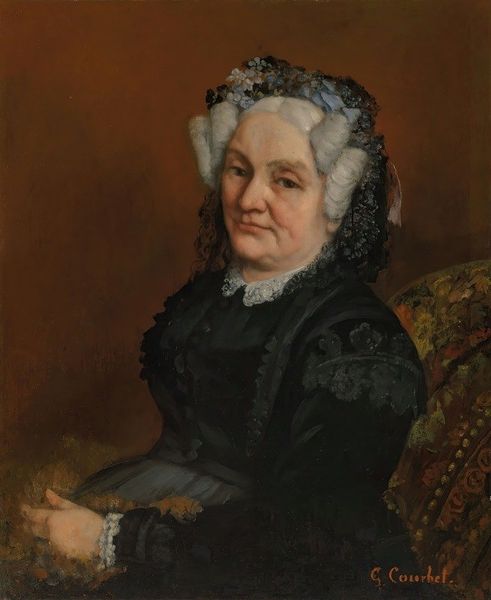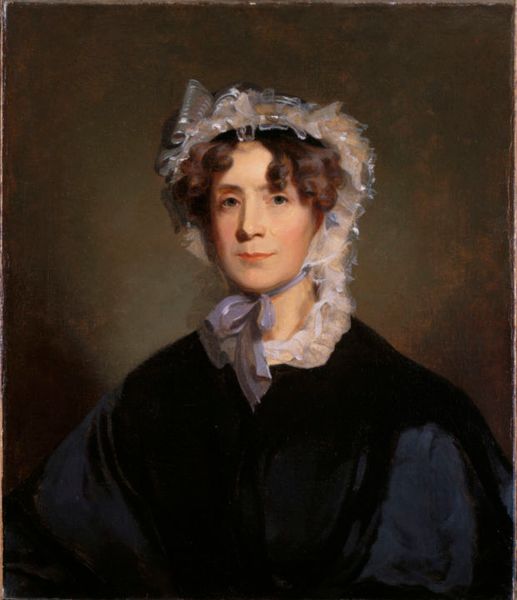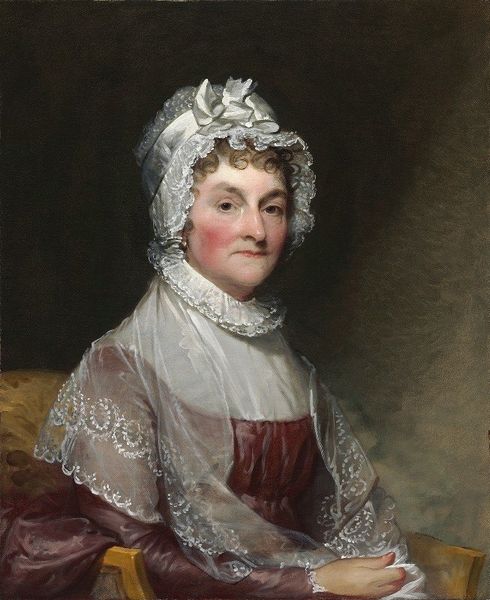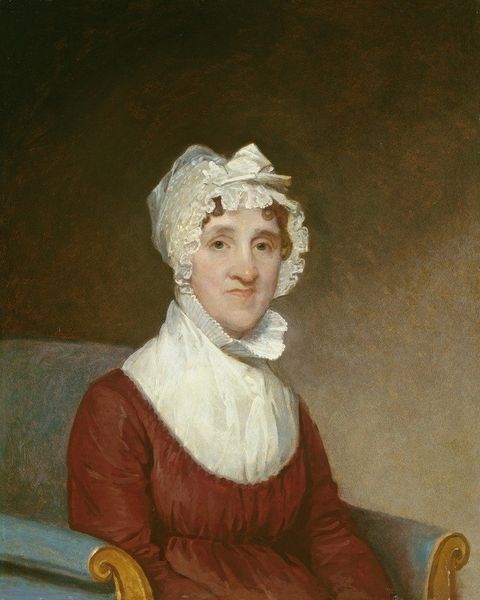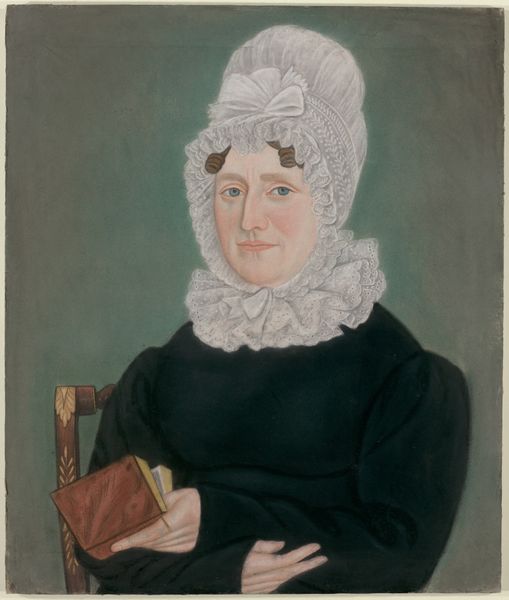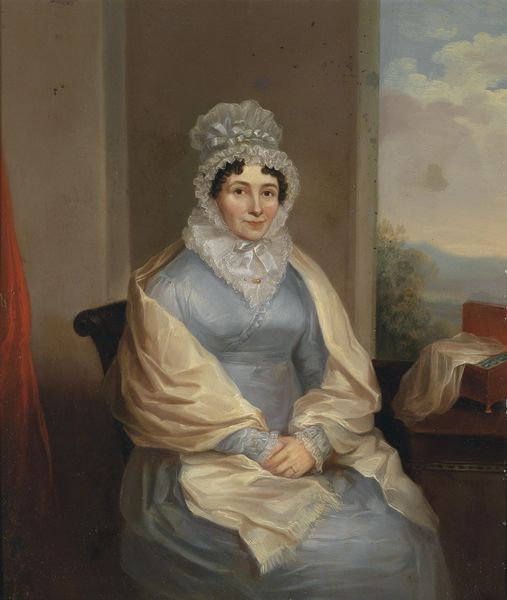
painting, oil-paint
#
portrait
#
portrait
#
painting
#
oil-paint
#
romanticism
#
genre-painting
#
academic-art
Dimensions: overall: 76 x 63 cm (29 15/16 x 24 13/16 in.) framed: 91.1 x 78.1 x 5.7 cm (35 7/8 x 30 3/4 x 2 1/4 in.)
Copyright: National Gallery of Art: CC0 1.0
Curator: Welcome! We're standing before John Neagle's "Portrait of a Lady," completed sometime between 1825 and 1830. What’s your immediate impression? Editor: A sense of quiet strength. The direct gaze, the sturdy presence – it's not flamboyant, but assured. A kind of domestic authority radiates from her. Curator: I find the geometric forms compelling. The contrast between the stark, dark dress and the delicate, almost ethereal, lace framing her face creates a striking visual hierarchy. Neagle’s strategic use of chiaroscuro pulls our eye directly to her expression. Editor: Absolutely. And considering the period, I wonder about the unseen labor that allows this woman to present herself with such simple elegance. Who was she? What role did she play in her community? The tightly closed mouth suggests untold stories, perhaps a carefully guarded interior life amidst social constraints. Curator: The tight, closed mouth could simply be Neagle's technique—an effort to render a realistic, rather than idealized, image. Look closely at the brushstrokes: thick and deliberate. The visible application of oil paint becomes integral to the composition itself, a physical manifestation of artistic intention. Editor: But can we truly divorce technique from its historical moment? This isn't just any technique; it's deployed within a power dynamic. Wealthy patrons commissioned these works. So the technique also signifies control of the image, not just skill in the hand. The crisp lace could point to a rising merchant class, their need to display status through the attire of their wives. Curator: One can't deny the evidence that's displayed so well. Neagle certainly displays remarkable talent with his brushwork as she embodies both strength and presence while rooted within the era's norms and aesthetic conventions. Editor: Precisely! It's within those constraints, that friction, where we discover the most intriguing aspects of this ‘Portrait of a Lady’. Let's just sit with her story. Curator: Indeed.
Comments
No comments
Be the first to comment and join the conversation on the ultimate creative platform.
